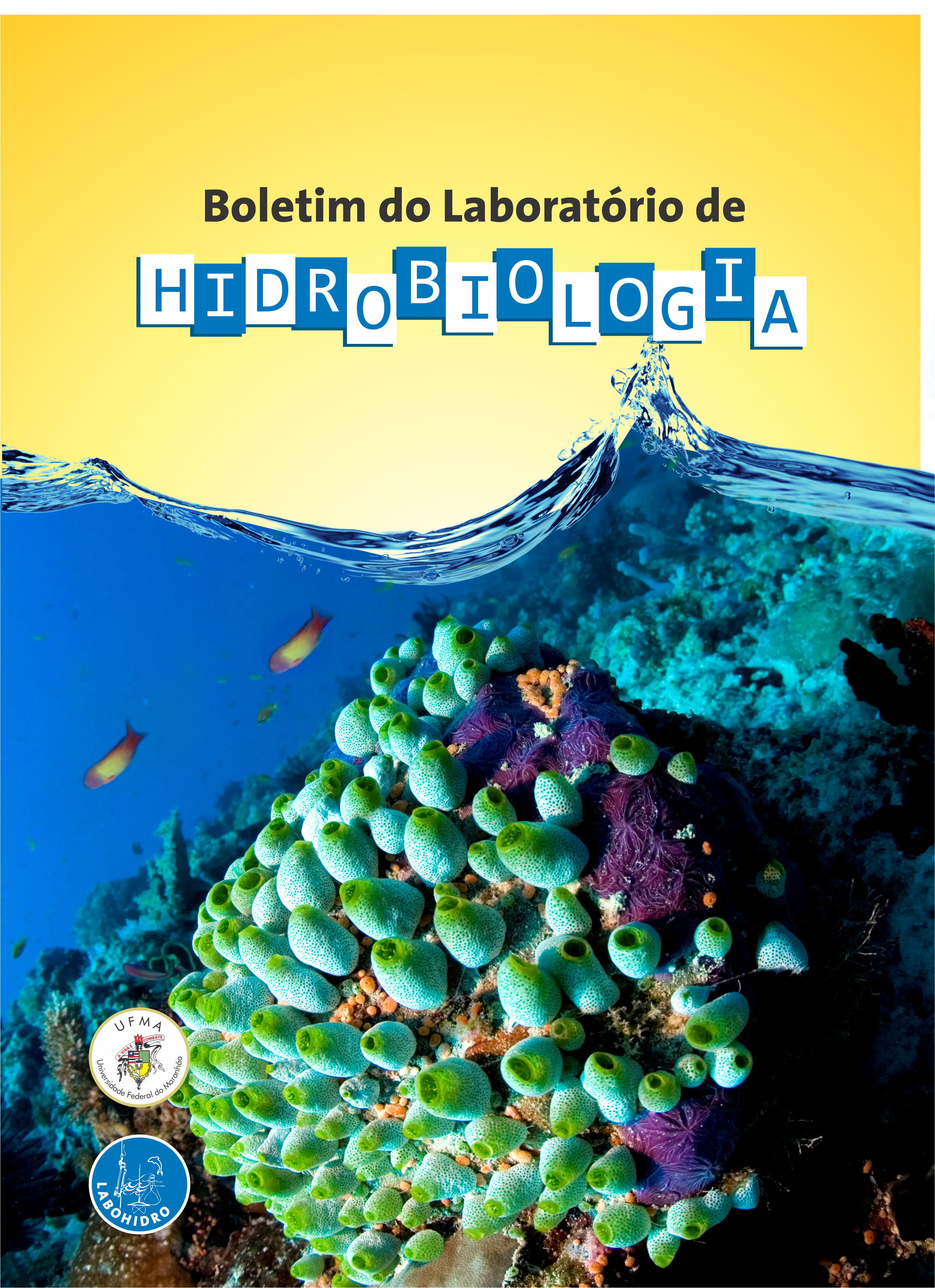EFFECTS OF MANGANESE ON THE MORPHOLOGY OF Lemna minor L. (Araceae)
DOI:
https://doi.org/10.18764/1981-6421e2023.7Keywords:
Phytorremediation, Pollution, Aquatic macrophyteAbstract
The present work aimed to compare the physiological responses of the species Lemna minor
L. to increased concentrations of the metal manganese (Mn) in nutrient solution, and whether these plants are capable of phytoremediating environments with high concentrations of this heavy metal. The plants were collected in artificial lakes, without apparent manganese contamination, located at Viveiro Tracoá in the region of São José de Ribamar - MA. The experiment was carried out in petri dishes, where 350 ml of Hoagland’s nutrient solution were added plus increasing doses of Mn (0; 0.2; 0.5 and 0.7mM)) in the form of MnCl2, with 1 ⁄ 4 of ionic strength. The experiment was conducted in a completely randomized design, with five replications, with the experimental unit consisting of 30 plants. Morphological characteristics of the species subjected to increasing concentrations of Mn were evaluated. Individuals from all treatments, except the control treatment, showed visual symptoms of toxicity, including chlorosis, wrinkling and curling of the leaf blade and necrosis. Despite this, there was no death of any L. minor plant, which suggests that it is a species that has the capacity to accumulate this element without major damage to the plants. Therefore, it is concluded that the L.minor species has the potential to be used in phytoremediation and
offers a new resource to explore and discover the mechanisms of Mn accumulation in plants,
in addition to helping to clean contaminated water.
Downloads
References
ALIFERIS, K. A., MATERZOK, S., PAZIOTOU, G. N., & CHRYSAYI-TOKOUSBALIDES, M. (2009). Lemna minor L. as a model organism for ecotoxicological studies performing 1H NMR fingerprinting. Chemosphere, 76(7), 967-973.
CABRERA, L. I., SALAZAR, G. A., CHASE, M. W., MAYO, S. J., BOGNER, J., & DÁVILA, P. (2008). Phylogenetic relationships of aroids and duckweeds (Araceae) inferred from coding and noncoding plastid DNA. American Journal of Botany, 95(9), 1153-1165.
ECKHARD, G.; HORST, W.J.; NEUMANN, E. (2012). Adaptation of Plants to Adverse Chemical Soil Conditions. Marschner’s Mineral Nutrition of Higher Plants,409–472.
FECHINE, J. M. (2020). Proteômica diferencial de Lemna aequinoctialis sob estresse por cádmio (Master's thesis, Universidade Federal de Pernambuco).
HOAGLAND, D. R., & ARNON, D. I. (1950). The water-culture method for growing plants without soil. Circular. California agricultural experiment station, 347(2).
JAIN, S. K., GUJRAL, G. S., JHA, N. K., & VASUDEVAN, P. (1988). Heavy metal uptake by Pleurotus sajor-caju from metal-enriched duckweed substrate. Biological Wastes, 24(4), 275-282.
de 8
KHELLAF, N., & ZERDAOUI, M. (2009). Phytoaccumulation of zinc by the aquatic plant, Lemna gibba L. Bioresource technology, 100(23), 6137-6140.
KITAO, M., LEI, T. T., NAKAMURA, T., & KOIKE, T. (2001). Manganese toxicity as indicated by visible foliar symptoms of Japanese white birch (Betula platyphylla var. japonica). Environmental Pollution, 111(1), 89-94.
LAMEGO, F. P; VIDAL, R. A. (2007). Fitorremediação: plantas como agentes de despoluição? Pesticidas: Revista de ecotoxicologia e meio ambiente, 17, 12-13.
MARTINS, I., & LIMA, I. V. (2001). Ecotoxicologia do manganês e seus compostos. Cadernos de referência ambiental, 7, 18-42.
PIO, M. C. S., SOUZA, K. S., SANTANA, G. P. (2013). Capacidade da Lemna aequinoctialis para acumular metais pesados de água contaminada. Acta Amaz.,43(2),203-210.
SANTOS, E. F., SANTINI, J. M. K., PAIXÃO, A. P., JÚNIOR, E. F., LAVRES, J., CAMPOS, M., & DOS REIS, A. R. (2017). Physiological highlights of manganese toxicity symptoms in soybean plants: Mn toxicity responses. Plant physiology and biochemistry, 113, 6-19.
WISSEMEIER, A. H., & HORST, W. J. (1992). Effect of light intensity on manganese toxicity symptoms and callose formation in cowpea (Vigna unguiculata (L.) Walp.). Plant and Soil, 143, 299-309.
Downloads
Published
How to Cite
Issue
Section
License
Copyright (c) 2024 Boletim do Laboratório de Hidrobiologia

This work is licensed under a Creative Commons Attribution 4.0 International License.





